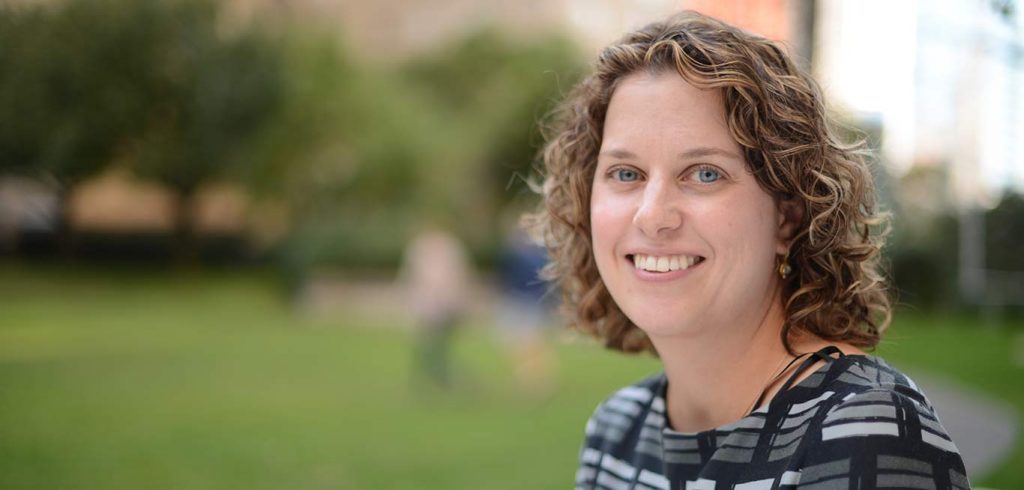The reading gap, or level of missing competency that can occur among students somewhere between grade school and high school, is closing, and a new book published this month by Molly Ness, PhD, is helping teachers make it happen.
Ness, an associate professor in childhood education at Fordham’s Graduate School of Education, has published The Question is the Answer, (Rowman & Littlefield, 2015). The manual is devised for teachers to help young readers become more familiar with expository text, a writing form common in news reports about world events, weather reports, recipes, and other adult-focused prose.
 Ness noted that 10 years ago, children were spending the majority of their time entrenched in narrative text. Now, thanks in part to changes brought on by the Common Core, they’re reading 50 percent in narrative text and 50 percent in expository text.
Ness noted that 10 years ago, children were spending the majority of their time entrenched in narrative text. Now, thanks in part to changes brought on by the Common Core, they’re reading 50 percent in narrative text and 50 percent in expository text.
The path to understanding a piece of expository text lies in posing questions, which has traditionally been the province of teachers who ask questions for students to answer.
Yet, research has shown that, at home, children ask one question every 2 minutes and 36 seconds, or between 400 and 1200 questions each week. Within one year, it’s estimated they’ll ask approximately 105,120 questions.
Ness’ book suggests that teachers should encourage the students ask the questions.
“Anecdotal research says that kids aren’t really asking a lot of questions in the classroom, but there isn’t any research that actually pins down the frequency . . . or the kinds of questions they’re asking [when they do ask],” Ness said.
Ness’ research team has begun a project in the New York City schools, going into classrooms and coding for the frequency of questions as well as analyzing “the kinds of questions they ask.”
“We can look at what teachers can do to increase them,” she said.
The book provides examples of instruction that Ness has either led or observed from kindergarten to fifth grade, and also features instruction for struggling readers and ESL students. One of the key points is that teachers don’t have to use sophisticated text to get children as young as 4 years to ask good questions. Even nursery rhymes will do.
But what to do with the head scratchers that kids posit that are off base? Ness advocates the “Parking Lot,” a concept she uses in her own home. When her own daughter recently asked Ness if her heart was the same shape as a Valentine’s Day heart, Ness wrote it down and taped it to a paper “parking lot” list at home.
“When we went to the library that week, I said, ‘This is a question you asked; would you like to learn the answer?’ and she said ‘Yes.’ So we got a book about the human body,” she said, noting that it provided more expository text exposure.
Unfortunately, most of the texts that kids are exposed to at home are more narrative, Ness said. “For their bedtime stories, most parents still pick out stories like Where the Wild Things Are.”
In this way, the “Parking Lot” practice can also help provide the technical vocabulary and the text structure that young readers will need, she said.
“It’s an easy thing that a parent can do to bridge the home-school connection as well.”

